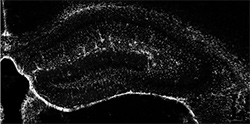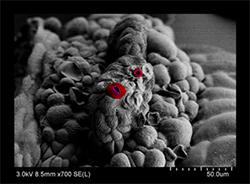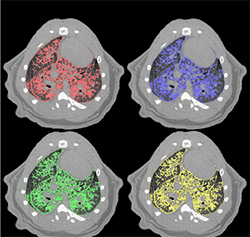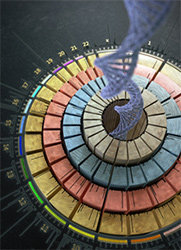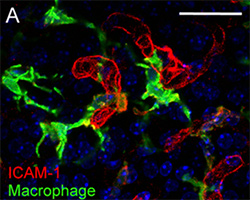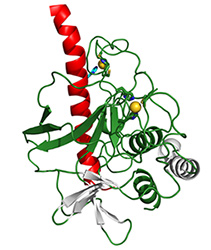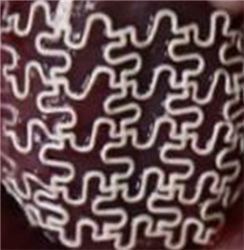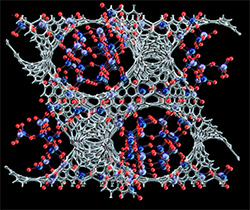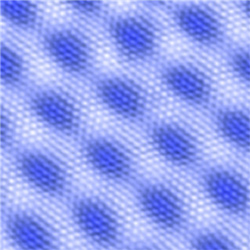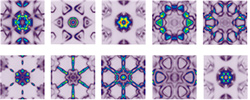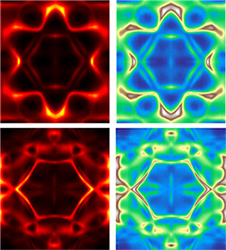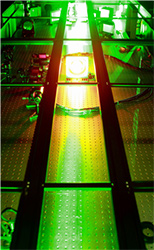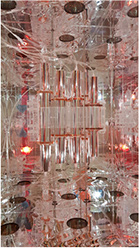주메뉴
- About IBS 연구원소개
-
Research Centers
연구단소개
- Research Outcomes
- Mathematics
- Physics
- Center for Theoretical Physics of the Universe(Particle Theory and Cosmology Group)
- Center for Theoretical Physics of the Universe(Cosmology, Gravity and Astroparticle Physics Group)
- Center for Exotic Nuclear Studies
- Center for Artificial Low Dimensional Electronic Systems
- Center for Underground Physics
- Center for Axion and Precision Physics Research
- Center for Theoretical Physics of Complex Systems
- Center for Quantum Nanoscience
- Center for Van der Waals Quantum Solids
- Chemistry
- Life Sciences
- Earth Science
- Interdisciplinary
- Institutes
- Korea Virus Research Institute
- News Center 뉴스 센터
- Career 인재초빙
- Living in Korea IBS School-UST
- IBS School 윤리경영


주메뉴
- About IBS
-
Research Centers
- Research Outcomes
- Mathematics
- Physics
- Center for Theoretical Physics of the Universe(Particle Theory and Cosmology Group)
- Center for Theoretical Physics of the Universe(Cosmology, Gravity and Astroparticle Physics Group)
- Center for Exotic Nuclear Studies
- Center for Artificial Low Dimensional Electronic Systems
- Center for Underground Physics
- Center for Axion and Precision Physics Research
- Center for Theoretical Physics of Complex Systems
- Center for Quantum Nanoscience
- Center for Van der Waals Quantum Solids
- Chemistry
- Life Sciences
- Earth Science
- Interdisciplinary
- Institutes
- Korea Virus Research Institute
- News Center
- Career
- Living in Korea
- IBS School
News Center
| Title | 2016 Art in Science | ||||
|---|---|---|---|---|---|
| Name | Department of Communications | Registration Date | 2016-11-18 | Hits | 4353 |
| att. |
 thumb.jpg
thumb.jpg
|
||||
2016 Art in ScienceThe Art in Science exhibit was held in conjunction with the Commemorative Event for the Fifth Anniversary of the Institute for Basic Science (IBS) on November 17-18. In this second round of the Art in Science exhibit, 16 pieces of art were submitted by IBS scientists. Notably, the exhibit featured collaborative artworks between IBS scientists and Daejeon Museum of Art that exhibit the interplays between science and art. The Art in Science exhibit will continue to open until December 18 at the Art Center of the Daejeon Museum of Art. The Pondby Junyeop Roh (Researcher) Claude Monet has been immortalized by his renowned painting of the pond dotted by colorful water lilies. When calcium-binding proteins (Parvalbumin, in red), synaptic proteins (PTP delta, in green) and DNA (in blue) are stained in the layer 2/3 of mouse medial prefrontal cortex region, the resultant image is remarkably reminiscent of the masterpiece. The medial prefrontal cortex has been extensively studied as the region mediating social behavior, decision making and, in humans, personality expression. Milky Way in the Brainby Haram Park (Researcher) The hippocampus is the "sea horse" shaped structure located bilaterally within mammalian brain. It is part of the limbic system, and is thought to contribute to information consolidation, spatial memory, and both short and long term memory. In the image, we stained star-shaped astrocytes, known as astroglia in the hippocampal region of the brain with GFAP, glial fibrillary acidic protein. The stained cells are represented in white and they look like white stars set within a contrastingly dark background, akin to the milky way observed in the night sky. The Nose of Plantby Taek Han Yoon (Researcher) Plant's respiratory organs are called 'stomata'. They are responsible for photosynthesis and therefore are essential to the life of most of the species on Earth. Via Field Emission Scanning Electron Microscopy imaging technique, we were able to reveal that stomata are shaped like a heart....maybe a hint to Mother Earth's love? Drowning Lungby Seung-Jun Lee (Researcher), Gou Young Koh (Director) The image is a visualization of vascular leakage in the lungs of a mouse model of sepsis. An infection or injury can lead to sepsis where severe inflammatory response and vascular leakage occur throughout the body. These septic challenges lead to multiple organ failure, including accumulation of fluid in the lungs. We have demonstrated the beneficiary role of the endothelial tyrosine kinase receptor Tie2 in ameliorating vascular leakage and sepsis. Dart of CRISPR Accuracyby Daesik Kim (Researcher), Jungeun Kim (Researcher), Jin-Soo Kim (Director) This image represents the specificity of recently developed tools for genome editing and became the cover of the prestigious journal Nature Biotechnology: like in the game of darts, the closer to the center, the better the result. We performed a test called Digenome-seq, devised to identify if three DNA-cutting proteins where targeting wanted or unwanted DNA sites throughout the genome. The genome-wide analyses showed that the proteins of the Cpf1 family were highly specific, showing fewer unintended cleavages: 6 for LbCpf1 (in blue) and 12 for AsCpf1 (in red), compared to another protein called Cas9 (in yellow), which cuts more than 90 wrong sites in the human genome. Our study shows the superior specificity of Cpf1 proteins. Battle in Your Blood Vesselby Joana Almaça (Researcher) Cells in the pancreatic islets secrete several hormones, like insulin, playing a pivot role in regulating glucose concentration in our body. The insulin secretory function of pancreatic islet beta cells is robust with age, but in this image we found that inflammation of blood vessels in the same region caused impaired glucose regulation in aged mice. We used a red fluorescent marker to stain proteins (ICAM-1) present on the surface of the blood walls and a green marker to recognize a type of white blood cells called macrophage. The image looks like an intense fight between blood vessels and macrophages in pancreatic islets. The Beauty of Evolution: the Structure of the Drosha Proteinby Sung Chul Kwon (Research Fellow) A type of regulatory RNA called microRNA involved in almost all biological processes such as development, aging, cancer, differentiation and immune response, is generated by two consecutive processing steps involving Drosha and Dicer proteins. This figure shows the bottom part of a Drosha protein whose structure has been solved 12 years after its first identification. Drosha has the same backbone structure as Dicer (red and green), plus some unique regions (yellow and white). Thanks to this information, we can infer how Drosha diverged from the ancestral Dicer and obtained its new function. Net for Saving Your Lifeby Jinkyung Park (Ph.D), Suji Choi (graduate student), Taeghwan Hyeon (professor), Dae-hyeong Kim (professor), Hye Jin Hwang (professor, MD) We wrapped the sick heart of rat with a mesh whose function resembles the cardiac electrical conduction system and mechanical properties. The mesh is made with a highly conductive silver nanowire/SBS rubber composite and it is designed with serpentine mesh pattern, so that it could detect electrical signals reliably on the moving rat heart without impeding the heart to relax. When the heart was electrically stimulated through the epicardial mesh, it reduced total ventricular activation time and improved heart contractions. The epicardial mesh was also able to deliver an electrical shock to terminate a ventricular tachyarrhythmia (excessive heart rate) in rats. Graphene Hiveby Kyoungsoo Kim (Research Fellow) A schematic picture showing the carbon structure formed by zeolites. Zeolites are a family of crystalline materials that consist of aluminum, silicon and oxygen (in light blue, blue and red), and may be structured as 3D micropores with diameter of less than 1 nanometer depending on the atomic configuration. We thought that such a porous system of zeolites would be ideal as a template for synthesizing a 3D graphene architecture. However, the synthesis of such structure was limited by the narrow pore aperture of zeolites. Recently, our research group came up with a method to easily form a carbon framework by using lanthanum catalysts embedded in zeolite pores, and achieved the synthesis of microporous graphene architecture (in gray) resembling a 3D network of carbon nanotube. Poetic Calm Sea Made by Atomsby Jeongjin Kim (Research Fellow) What if graphene encounters the calm vibration of platinum atoms? Material World through Kaleidoscopeby Beom Seo Kim (graduate student) Molybdenum di-telluride (MoTe2) has drawn growing attention due to its application possibility. It has six-fold symmetry in the electronic structure due to its crystal structure. The electronic structure of MoTe2 was measured by angle resolved photoemission and images were constructed by folding constant energy contour of the experimental data. Each image represents constant energy contour at a specific binding energy. While the image drastically changes over different binding energies, the six-fold symmetry remains intact. The six-fold symmetry is reminiscent of the colors of a peacock or a view through a kaleidoscope. The Scream of Electronsby Shoresh Soltani (graduate student) Portraits of electron pockets living in a peculiar quantum world on the surface of strontium titanate. These ghostly beings which resemble The Scream by Edvard Munch, reveal themselves when we shed synchrotron light on a flat, shiny and clean surface of an single crystal in very low temperature and ultrahigh vacuum. They are responsible for electrical conductance on the surface of an insulating strontium titanate crystal which is the basis of oxide electronics. Different colors in each image, speak for different electron densities. Star in Platinumby Jongkeun Jung (graduate student) Platinum is not only a precious metal but also a useful material as a catalyst in chemical reactions. For example, it is used in automobiles as a catalytic converter. Its catalytic activity is determined by the surface properties such as the surface electronic structure. Experimental determination of its surface electronic structure is thus an important part of the catalysis research. The electronic structure can be measured using angle resolved photoemission (ARPES) technique in which photoelectric effect is utilized. The experimental data was taken by using synchrotron based ARPES. The Fermi surface data is star-shaped due to the underlying structural symmetry in the crystal structure. Images in the figure show constant energy contour data at different binding energies. The Sun Light Created by Human Handby Hwang woon Lee (Research Fellow) In this picture we show the moment when the ultra-high intense, ultra-short laser pulse is generated. It has approximately 4PW(petawatt, that is approximately 4 followed by 12 zeros horsepowers) one fortieth of the power that the Earth can collect from the Sun light (170 PW) in 20 femtoseconds (that is 20x10^-15 seconds or so, the time it takes a light pulse to travel through the one sixth of the human hair). World of Diversityby Young-Im Kim (Research Fellow), Jihoon Choi (Research Fellow) This work of art shows that various resonant modes are generated in a variety of sizes resonator visually. A resonator is a device that records a specific frequency and vibration using a resonance phenomenon that is amplified when a specific frequency is found. Various studies using such resonance phenomenon is being done. Resonance is a phenomenon that can be found everywhere in our world. In one of the resonator to various resonance modes exist similar to our world people have a variety of looks and emotions. Chamber for the Mystery Matterby Chang Hyon Ha (Research Fellow) The photo shows the innermost view of the dark matter experiment, called COSINE, situated 700 meters below the surface at Yangyang underground laboratory. The cylindrical cells in the middle center encase ultra-pure NaI(Tl) crystals which are used to collect a faint light induced by the interaction of dark matter and the crystal nuclei. In order to distinguish the signal from external noise entering outside of the crystals, we position the crystals in a large chamber where all surfaces are laminated by reflective films that work like a mirror. Then, photons from the noise or any other light in the chamber can easily bounce back and forth and be contained, creating the exotic image. |
|||||
| Next | |
|---|---|
| before |
- Content Manager
- Public Relations Team : Suh, William Insang 042-878-8137
- Last Update 2023-11-28 14:20











